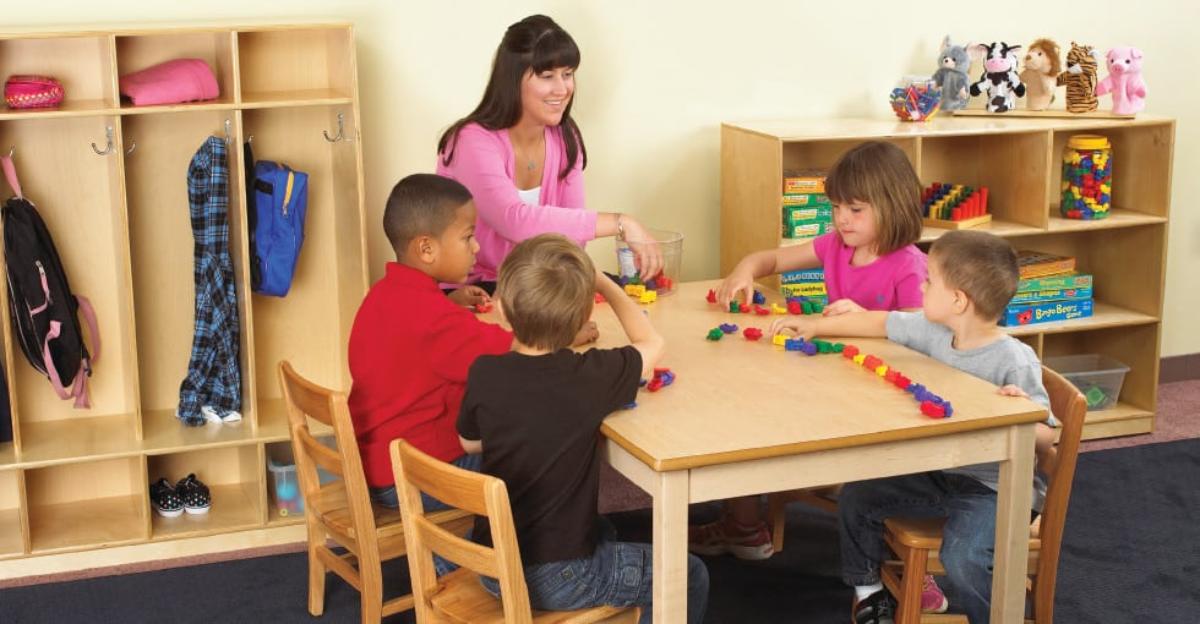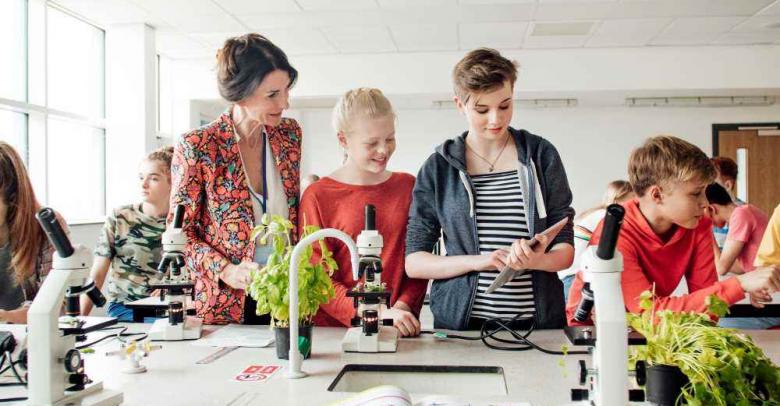To an outside observer, a peek into a classroom filled with engaged young children may look chaotic and that every child is doing their own thing.
That is usually the case as the interests and skill levels of children five and under vary greatly. Learning centers provide a setting that accommodates early learners, with spaces that support a variety of skill levels, interests and learning styles.
 The early childhood classroom is home to the beginnings of project-based, cross-curricular learning. It can be a dynamic environment where a shared book about a hungry caterpillar can lead to engineering a caterpillar village in the block corner, observing metamorphosis of a cocoon to a butterfly in the science center, collecting data and charting a caterpillar’s eating habits or writing and videotaping stories with rich language and newly acquired vocabulary. Literacy and STEM concepts come to life through real experiences with hands-on materials that engage and inspire the problem solvers of tomorrow.
The early childhood classroom is home to the beginnings of project-based, cross-curricular learning. It can be a dynamic environment where a shared book about a hungry caterpillar can lead to engineering a caterpillar village in the block corner, observing metamorphosis of a cocoon to a butterfly in the science center, collecting data and charting a caterpillar’s eating habits or writing and videotaping stories with rich language and newly acquired vocabulary. Literacy and STEM concepts come to life through real experiences with hands-on materials that engage and inspire the problem solvers of tomorrow.
It may look like play but learning – and an excitement for learning – happens every day in well-planned early childhood classrooms.
…And it all starts with the furniture! Intentional, play-based learning flourishes in a flexible learning space where young children can explore, experiment and make discoveries about our world and how it works. Well-designed furniture can define a classroom space and support the teacher in preparing and presenting materials and activities that meet the changing needs of their students. Innovative furnishings that support a variety of learning centers can function as the “second teacher in the room”.
A creatively designed space with flexible, durable, safe furnishings that can be reconfigured for individualized play, small group exploration and whole class activities inspires learning and improves student outcomes.






Leave a Reply